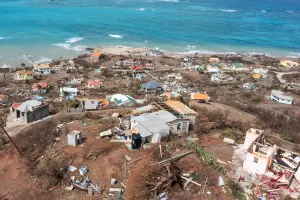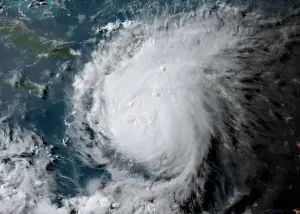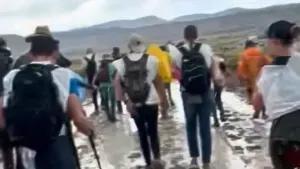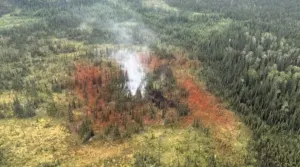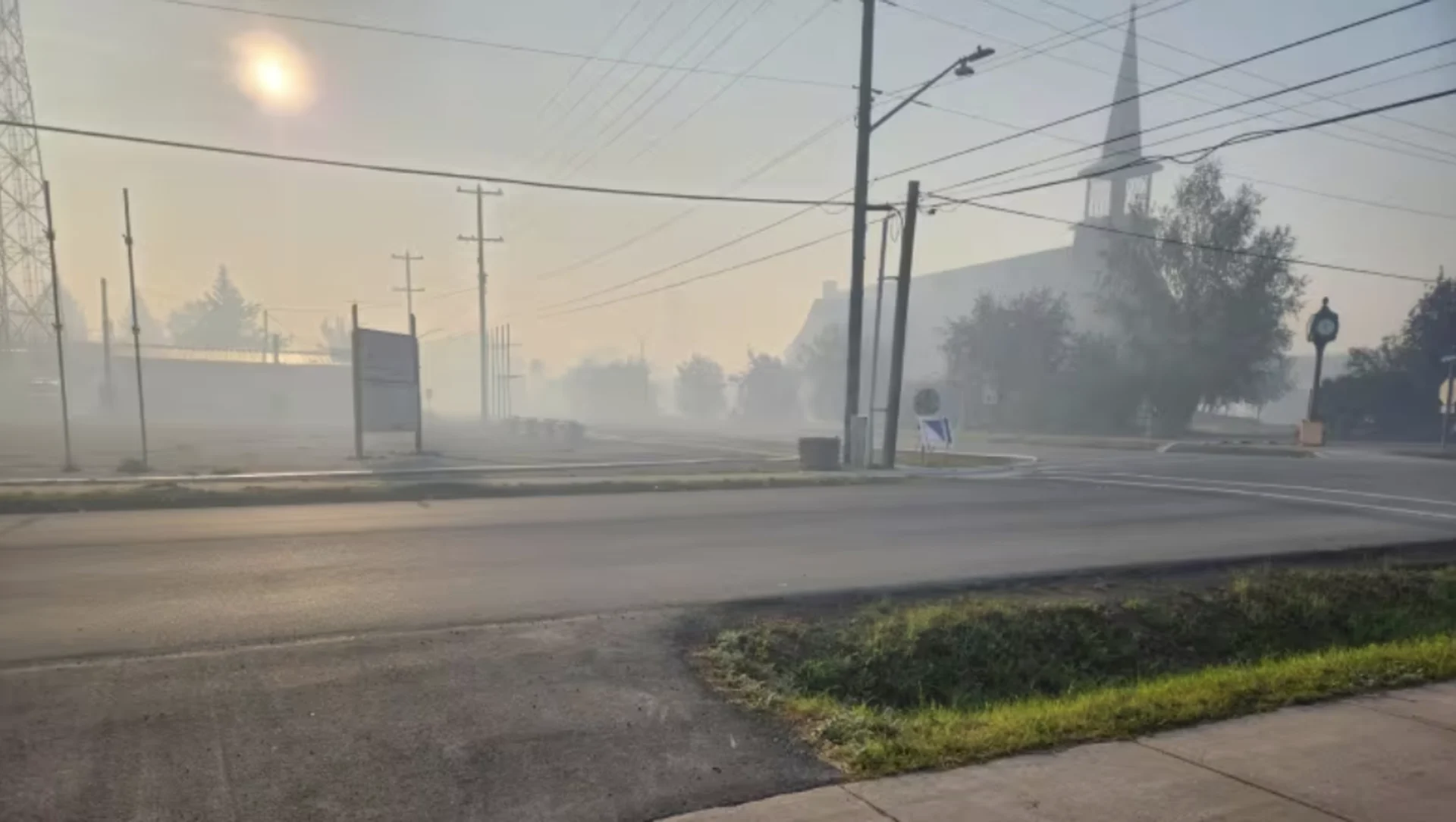
Southern N.W.T. crews gear up for challenging conditions that could fuel fires
Visit The Weather Network's wildfire hub to keep up with the latest on the unprecedented wildfire season across Canada.
With forecasts calling for rising temperatures and falling humidity, town officials in Fort Smith, N.W.T., are warily watching to see how it impacts the massive wildfire burning just a few kilometres away.
Shortly after 9:30 a.m. Monday, there was already ash and smoke in the air. One town councillor, Dana Fergusson, noted on social media that it was going to be another "cautiously nervous day with heat and wind."
In its latest update, Parks Canada — one of four organizations involved with the incident command team tackling the fire — said Tuesday conditions would create a "crossover."
"Crossover occurs when the humidity is lower than the temperature. This causes extreme fire behaviour and is extremely unsafe for people to be around," reads the update.
Temperatures are forecast to reach a high of 27 C Tuesday with humidity between 20 and 23 per cent.
SEE ALSO: Despite rain in Yellowknife area, fire threat remains
The Wood Buffalo Complex fire has stayed steady for the past few days, burning approximately four kilometres from Fort Smith, which is located about 300 kilometres southeast of Yellowknife, near the Alberta border.
"I'm hoping that today, this angry monster in the bush, just plays nice and doesn't flare up and doesn't do the things that we worry about cause there's a lot of helicopter activity, there's a lot of people actioning on the line," said Fergusson.
Fergusson's message included a warning to residents who are still in Fort Smith.
"If you hear sirens, if you hear fog horns, we are now at imminent danger," Fergusson said. If that happens, residents should make their way to the recreation centre, where they'll get further instructions.
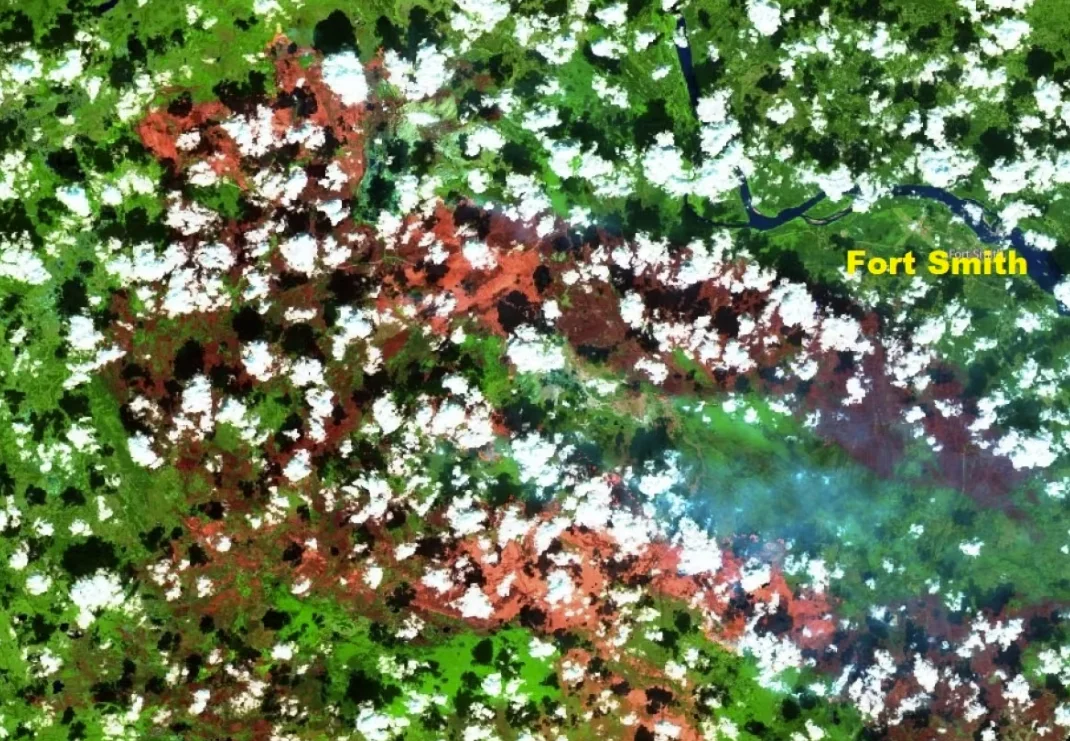
A satellite view of the wildfire's proximity to Fort Smith, N.W.T., on Aug. 20. (Sentinel-2/European Space Agency)
'Utmost belief in our ground crews': Fort Smith mayor
Much like the Yellowknife area, cooler conditions and lighter winds over the weekend have limited the fire's growth near Fort Smith.
Mike Westwick, fire information officer with the N.W.T. government, said crews used the reprieve from the weather to prepare for this situation, setting up a network of firebreaks and a "really impressive sprinkler line that runs from Fort Fitzgerald to Salt River First Nation."
Fort Smith Mayor Fred Daniels also took to social media Sunday evening to share a message with the town's 2,600 residents, most of whom left after an evacuation order was issued more than a week ago.
"I have the utmost belief in our ground crews that are going to save the community," he said. "I give them fully my support to do whatever they want and do whatever they have to do."
WATCH: Huge wildfire smoke plumes blanket sky in Northwest Territories
He urged residents to stay patient and not return home until officials say it is safe to do so.
"This is the first time Fort Smith has ever evacuated and it's a big thing, and it's new to all of us … but as a community, we will get through it," he said.
Daniels is in Fort McMurray, Alta., where he said is taking part in regular meetings to get updates on what's happening back home.
He said he will not do much public messaging, instead will defer to crews on the ground.
"I've never fought a fire in my life, I don't know anything about it and they're the ones that we should be listening to," he said.
Fire still at bay near Hay River
In Hay River, N.W.T., the Hay River/Kakisa wildfire has remained about eight kilometres outside of the community of about 3,700 people, despite fears that it would reach the town a week ago, Westwick said.
Hay River is expected to experience the same conditions forecast for Fort Smith, which could push the fire closer to the town located about 200 kilometres south of Yellowknife by air.
Crews have "put in really good work there, removing fuel from the edge of the fire," Westwick said.
He added that it was difficult to predict whether the fire would reach the community in the coming days.
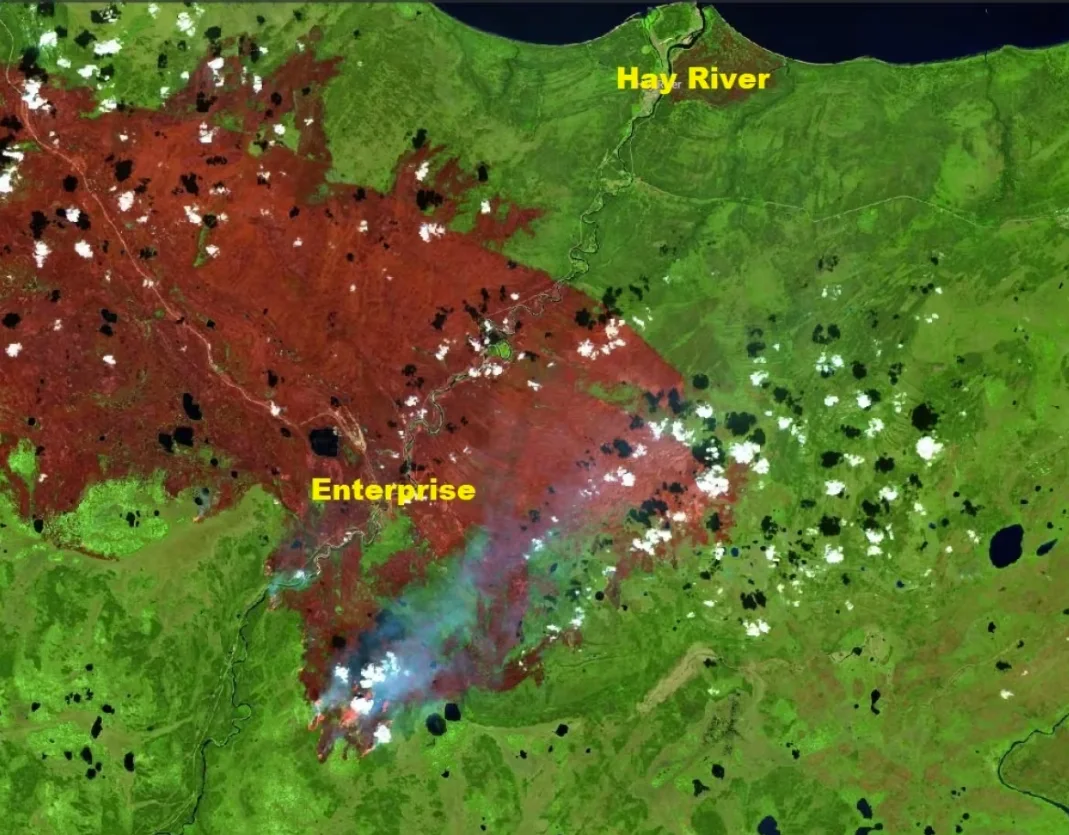
A satellite view on Aug. 20 of the wildfire that tore through the hamlet of Enterprise, N.W.T., and is threatening Hay River. (Sentinel-2/European Space Agency)
The Town of Hay River shared an update on social media stating crews from Ontario, Saskatchewan and 80 "eager military personnel" will take on the fire in the coming days.
Additional sprinklers have also been set up in the town and the nearby Kátł'odeeche First Nation.
With winds expected to gust up to 50 km/h Tuesday, "crews will be practicing 'bump and run' drills in advance of the expected increased fire activities to be prepared," reads the update.
This means actively fighting the head of the fire, where crews actively extinguish spot fires and hot spots as it moves. It is often used along with control lines and other strategies to try and direct the fire in a designated direction.
On the opposite side of the fire, the town said dozers have been working to create control lines near Kakisa.
Thumbnail mage courtesy of Fort Smith Protective Services/Facebook via CBC News.
This article, written by Francis Tessier-Burns, was originally published for CBC News.






